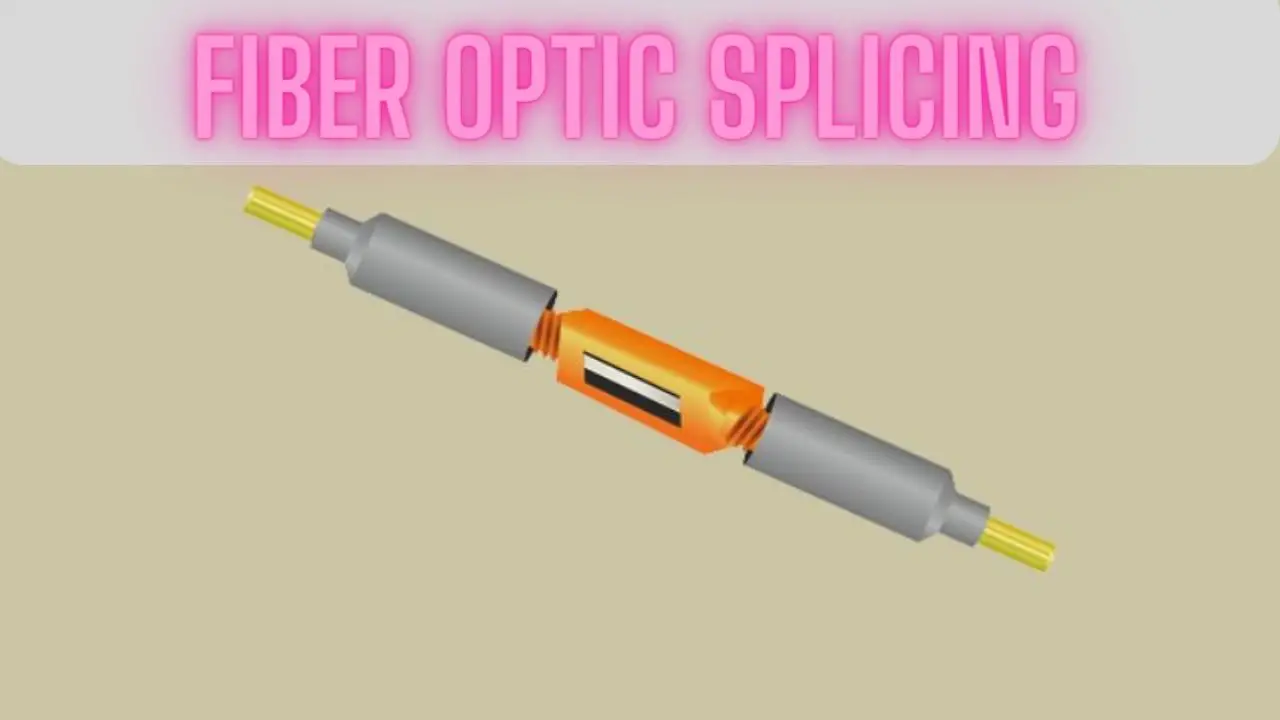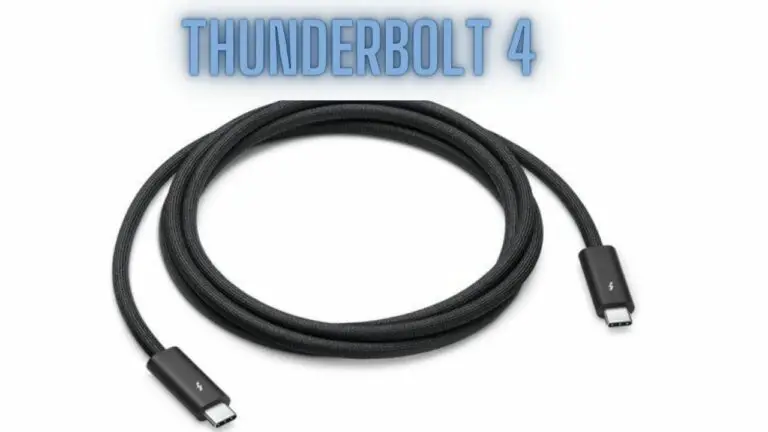Can You Splice Fiber Optic Cable? Fiber Optic Slicing
Introduction to Fiber Optic Splicing
Fiber optic splicing is a crucial process in telecommunications and networking, involving the permanent joining of two optical fibers to create a continuous pathway for light signals. This technique plays a fundamental role in maintaining signal integrity, minimizing losses, and ensuring reliable data transmission over long distances in fiber optic communication systems. In this introduction, we’ll explore the basics of fiber optic splicing, its importance, and the methods used to achieve seamless connections between optical fibers. Additionally, we’ll discuss the applications of fiber optic splicing and its significance in modern telecommunications infrastructure.
Importance of Fiber Optic Splicing
Fiber optic splicing is of paramount importance in telecommunications and networking for several reasons:
- Signal Continuity: Fiber optic splicing ensures the uninterrupted transmission of optical signals by creating seamless connections between optical fibers. This is essential for maintaining signal integrity and preventing data loss, especially in long-distance communication networks.
- Minimized Signal Loss: Properly spliced optical fibers result in minimal signal loss, allowing for efficient data transmission over extended distances. This is critical for high-speed internet, telephony, and multimedia applications where signal degradation can degrade performance and reliability.
- Network Reliability: Splicing enables the creation of robust and reliable fiber optic networks capable of withstanding environmental factors such as temperature fluctuations, moisture, and mechanical stress. By eliminating weak points and discontinuities in the fiber optic cable, splicing enhances network resilience and uptime.
- Cost Efficiency: Fiber optic splicing eliminates the need for additional hardware components such as connectors and adapters, which can incur ongoing maintenance costs and introduce points of failure. By creating permanent connections between optical fibers, splicing reduces the overall cost of network deployment and maintenance.
- Scalability: Splicing facilitates the expansion and scalability of fiber optic networks by allowing new fibers to be seamlessly integrated with existing infrastructure. This flexibility is essential for accommodating growing bandwidth demands and expanding network coverage to support emerging technologies and applications.
- Optical Performance: Fusion splicing, a common method of fiber optic splicing, enables precise alignment and bonding of optical fibers, resulting in low insertion loss and excellent optical performance. This ensures that the transmitted light signals maintain their quality and integrity throughout the network.
- Versatility: Fiber optic splicing can be performed in various environments, including aerial, underground, and indoor installations, making it suitable for a wide range of telecommunications and networking applications. Splicing can also be employed in specialized settings such as fiber-to-the-home (FTTH) deployments and data center interconnects.
In summary, fiber optic splicing is essential for creating robust, reliable, and high-performance telecommunications and networking infrastructure. By ensuring signal continuity, minimizing loss, enhancing network reliability, and enabling scalability, splicing plays a critical role in meeting the ever-increasing demands of modern communication systems.
Methods of Fiber Optic Splicing
Fiber optic splicing involves the permanent joining of two optical fibers to create a continuous pathway for light signals. There are two primary methods of fiber optic splicing:
- Mechanical Cleaving:
- Process: Mechanical cleaving involves using a precision cleaver to score and break the fiber cleanly. The cleaving process creates a flat end face on the fiber, which is essential for achieving low-loss splices.
- Equipment: A mechanical cleaver typically consists of a cutting blade and a mechanism for precisely scoring and breaking the fiber. Cleavers may be handheld or benchtop models and vary in complexity and precision.
- Advantages: Mechanical cleaving is relatively simple and cost-effective, making it suitable for field installations and quick terminations. It does not require specialized equipment or extensive training.
- Disadvantages: While mechanical cleaving is convenient, it may result in higher signal loss compared to fusion splicing, especially if the cleave is not performed accurately. Mechanical cleaved fibers may also be more susceptible to environmental factors such as dust and debris.
- Fusion Splicing:
- Process: Fusion splicing involves aligning and permanently fusing the ends of two optical fibers using an electric arc or laser. The fusion process creates a seamless joint between the fibers, ensuring minimal signal loss and excellent optical performance.
- Equipment: Fusion splicing requires specialized equipment known as fusion splicers, which precisely align and fuse the fibers. Fusion splicers typically include a fusion splicing unit, cleaver, and fiber holders, as well as monitoring and control mechanisms.
- Advantages: Fusion splicing offers lower signal loss, higher reliability, and superior mechanical strength compared to mechanical cleaving. It is suitable for both single-mode and multimode fibers and can be performed in various environments.
- Disadvantages: Fusion splicing requires specialized equipment and expertise, as well as careful attention to environmental conditions such as humidity and temperature. Additionally, fusion splicers may be expensive to purchase and maintain.
In summary, both mechanical cleaving and fusion splicing are widely used methods of fiber optic splicing, each with its advantages and disadvantages. While mechanical cleaving is simpler and more cost-effective, fusion splicing offers superior optical performance and reliability, making it the preferred choice for critical applications and high-speed networks. The selection of splicing method depends on factors such as budget, performance requirements, and environmental conditions.
Fiber Optic Splicing Process
The fiber optic splicing process involves several steps to ensure the precise alignment and permanent fusion of optical fibers. Here’s an overview of the typical fiber optic splicing process:
- Preparation:
- Strip the protective coatings from the ends of the optical fibers using fiber stripping tools. This exposes the bare glass fiber, which is necessary for proper alignment and fusion.
- Clean the exposed fiber ends thoroughly to remove any dirt, debris, or contaminants that could interfere with the splicing process. Use lint-free wipes and alcohol-based cleaning solutions for optimal results.
- Alignment:
- Place the prepared optical fibers into the fusion splicer, ensuring that they are securely held in place by the fiber holders or clamps.
- Use the fusion splicer’s alignment mechanism to precisely align the ends of the fibers. This step is crucial for achieving low-loss splices and maximizing optical performance.
- Verify the alignment using the fusion splicer’s built-in magnification and imaging systems. Adjust the alignment if necessary to ensure optimal fiber positioning.
- Cleaving or Splicing:
- Depending on the splicing method used, either cleave the fibers using a mechanical cleaver or initiate the fusion splicing process.
- Mechanical Cleaving: Score and break the fibers cleanly using a precision cleaver to create flat end faces. Ensure that the cleave is perpendicular to the fiber axis for optimal results.
- Fusion Splicing: Initiate the fusion splicing process, where the fusion splicer generates an electric arc or laser beam to melt and fuse the ends of the optical fibers together. The splicer applies controlled heat and pressure to create a permanent bond between the fibers.
- Depending on the splicing method used, either cleave the fibers using a mechanical cleaver or initiate the fusion splicing process.
- Verification:
- After splicing, inspect the splice point using the fusion splicer’s imaging system or a separate optical microscope. Check for any signs of misalignment, gaps, or defects that could affect the splice quality.
- Measure the insertion loss and return loss of the splice using an optical power meter and reflectometer. These measurements verify the performance of the splice and ensure that it meets the required specifications.
- Protection:
- Once the splice is verified, protect it from environmental factors and mechanical stress by encapsulating it in protective sleeves or heat-shrink tubing. These sleeves provide physical reinforcement and prevent damage to the splice joint during handling and installation.
- Apply adhesive or epoxy to secure the protective sleeves in place and create a watertight seal around the splice.
- Final Inspection:
- Conduct a final visual inspection of the spliced fibers to ensure that they are properly protected and free from any defects or imperfections.
- Label the spliced fibers with identifying information such as splice number, fiber type, and installation date for future reference and maintenance purposes.
By following these steps carefully, technicians can achieve reliable and high-performance fiber optic splices that meet the stringent requirements of modern telecommunications and networking applications.
Tools and Equipment for Fiber Optic Splicing
Fiber optic splicing requires specialized tools and equipment to ensure precise alignment and permanent fusion of optical fibers. Here are some essential tools and equipment used in the fiber optic splicing process:
- Fusion Splicer:
- A fusion splicer is a specialized device used to align and fuse optical fibers together. It applies controlled heat and pressure to melt the fiber ends and create a permanent bond. Fusion splicers come in various models, including core alignment and clad alignment splicers, each offering different levels of precision and performance.
- Fiber Cleaver:
- A fiber cleaver is used to precisely cleave or cut optical fibers before splicing. It scores the fiber and breaks it cleanly to create flat end faces, which are essential for achieving low-loss splices. Cleavers may be manual or automatic, with adjustable cleave lengths and blade positions for optimal results.
- Fiber Strippers:
- Fiber strippers are used to remove the protective coatings from the ends of optical fibers, exposing the bare glass fiber underneath. They come in various designs to accommodate different fiber types and coating materials, ensuring clean and accurate stripping without damaging the fiber.
- Alignment Tools:
- Alignment tools such as V-grooves, alignment plates, and fiber holders are used to precisely align the ends of optical fibers before splicing. These tools ensure that the fibers are properly positioned for optimal light transmission and minimal signal loss during fusion.
- Cleaving Tools:
- In addition to fiber cleavers, other cleaving tools such as scribes and diamond blades may be used for specialized cleaving applications. These tools provide alternative methods for creating clean and precise cleaves in optical fibers, especially in challenging environments or with unconventional fiber types.
- Cleaning Supplies:
- Cleaning supplies such as lint-free wipes, alcohol pads, and cleaning solutions are essential for preparing the fiber surfaces before splicing. Proper cleaning removes dirt, debris, and contaminants that could interfere with the splicing process and degrade optical performance.
- Protective Sleeves:
- Protective sleeves or heat-shrink tubing are used to encapsulate and protect the spliced fibers from environmental factors and mechanical stress. These sleeves provide physical reinforcement and ensure the long-term reliability of the splice joint.
- Optical Power Meter and Reflectometer:
- Optical power meters and reflectometers are used to measure the insertion loss and return loss of spliced fibers, respectively. These measurements verify the performance of the splice and ensure that it meets the required specifications for signal transmission.
- Magnification Devices:
- Magnification devices such as optical microscopes or built-in cameras on fusion splicers are used to inspect the quality of splices and verify alignment before and after splicing. High-magnification images allow technicians to detect any defects or imperfections that could affect splice performance.
By utilizing these tools and equipment effectively, technicians can achieve precise and reliable fiber optic splices that meet the stringent requirements of modern telecommunications and networking applications.
Applications of Fiber Optic Splicing
Fiber optic splicing plays a crucial role in various applications across telecommunications, networking, and beyond. Here are some key applications where fiber optic splicing is commonly used:
- Telecommunications Networks:
- Fiber optic splicing is extensively used in telecommunications networks, including long-haul, metro, and access networks. It enables the creation of high-capacity fiber optic links for voice, data, and video transmission over long distances. Spliced fibers form the backbone of modern telecommunications infrastructure, supporting the rapid and reliable exchange of information between network nodes.
- Data Centers:
- In data centers, fiber optic splicing is used to create high-speed interconnects between servers, switches, and storage systems. Spliced fibers provide the low-latency, high-bandwidth connectivity required for cloud computing, virtualization, and big data analytics applications. Splicing also allows data center operators to optimize network performance and scalability while minimizing cable congestion and signal loss.
- Fiber-to-the-Home (FTTH) Installations:
- Fiber optic splicing is essential for deploying fiber-to-the-home (FTTH) and fiber-to-the-premises (FTTP) networks, which deliver high-speed internet, television, and telephone services directly to residential and commercial properties. Splicing enables the termination and connection of optical fibers at customer premises, providing reliable and high-performance broadband access for end-users.
- Medical Devices:
- Fiber optic splicing is used in medical devices and equipment for diagnostic imaging, surgical procedures, and therapeutic applications. Spliced optical fibers are integrated into endoscopes, catheters, laser systems, and other medical instruments to deliver light-based therapies, visualize internal organs, and perform minimally invasive surgeries. Fiber optic splicing ensures precise alignment and efficient light transmission in medical settings, enabling clinicians to deliver accurate diagnoses and treatments.
- Industrial Automation:
- In industrial automation and control systems, fiber optic splicing is employed to establish reliable communication links between sensors, actuators, and control units in manufacturing environments. Spliced fibers enable real-time monitoring, data collection, and remote control of industrial processes, enhancing productivity, efficiency, and safety in factories, power plants, and refineries. Fiber optic splicing is particularly well-suited for harsh industrial environments where electromagnetic interference, temperature extremes, and mechanical vibrations can affect signal quality and reliability.
- Military and Aerospace:
- Fiber optic splicing is used in military and aerospace applications for communication, surveillance, and navigation systems. Spliced optical fibers provide secure and high-bandwidth connectivity for command and control centers, aircraft, satellites, and unmanned aerial vehicles (UAVs). Fiber optic splicing also offers advantages in terms of lightweight, compact, and immune to electromagnetic interference (EMI) compared to traditional copper-based communication systems.
These are just a few examples of the diverse applications of fiber optic splicing across various industries. By enabling high-speed, reliable, and secure communication networks, fiber optic splicing contributes to the advancement of technology, innovation, and connectivity in the modern world.
Challenges and Considerations in Fiber Optic Splicing
While fiber optic splicing offers numerous benefits, there are also several challenges and considerations that technicians and engineers must address during the splicing process. Here are some key challenges and considerations:
- Precision and Accuracy:
- Achieving precise alignment and accurate fusion of optical fibers is critical for minimizing signal loss and ensuring optimal splice performance. Any misalignment or irregularities in the splice joint can degrade signal quality and compromise the integrity of the fiber optic link.
- Environmental Factors:
- Environmental conditions such as temperature fluctuations, humidity levels, and exposure to dust or moisture can affect the splicing process and the performance of spliced fibers. Technicians must take precautions to mitigate the impact of these factors and ensure consistent splice quality under varying conditions.
- Equipment Calibration and Maintenance:
- Fusion splicers and other splicing equipment require regular calibration and maintenance to maintain accuracy and reliability. Failure to calibrate or properly maintain splicing equipment can result in suboptimal splices, increased signal loss, and reduced overall network performance.
- Training and Expertise:
- Proper training and expertise are essential for performing fiber optic splicing effectively. Technicians must have a thorough understanding of splicing techniques, equipment operation, and safety protocols to ensure successful splicing outcomes. Continuous training and professional development are necessary to stay updated on advancements in splicing technology and best practices.
- Splice Verification and Testing:
- After splicing, it’s essential to verify the quality of the splice and conduct comprehensive testing to ensure that it meets the required performance standards. This may include measuring insertion loss, return loss, and optical power levels using specialized testing equipment such as optical power meters and reflectometers.
- Time and Cost Considerations:
- Fiber optic splicing can be a time-consuming and labor-intensive process, especially for large-scale installations or complex network configurations. Technicians must carefully plan and allocate sufficient time and resources to complete splicing tasks efficiently while minimizing downtime and disruption to network operations.
- Documentation and Record-Keeping:
- Proper documentation and record-keeping are essential for tracking splicing activities, maintaining an accurate inventory of spliced fibers, and facilitating future maintenance and troubleshooting efforts. Technicians should document splice locations, splice parameters, and other relevant information for reference and compliance purposes.
- Safety Precautions:
- Fiber optic splicing involves working with high-voltage equipment, sharp tools, and potentially hazardous materials. Technicians must adhere to strict safety protocols and wear appropriate personal protective equipment (PPE) to prevent injuries and ensure workplace safety during splicing operations.
By addressing these challenges and considerations proactively, technicians can overcome potential obstacles and achieve successful fiber optic splices that meet the stringent requirements of modern telecommunications and networking applications.
Training and Certification for Fiber Optic Splicing
Fiber optic splicing requires specialized skills and expertise to perform effectively and safely. Training and certification programs are available to help individuals acquire the knowledge and practical experience needed to become proficient splicing technicians. Here’s an overview of training and certification options for fiber optic splicing:
- Fiber Optic Splicing Courses:
- Many vocational schools, community colleges, and technical training centers offer fiber optic splicing courses as part of their telecommunications or networking programs. These courses cover topics such as fiber optic theory, splicing techniques, equipment operation, safety procedures, and hands-on splicing practice.
- Fiber optic splicing courses may be available in various formats, including classroom-based instruction, online learning, and hybrid models that combine both in-person and virtual instruction. Course durations and curricula may vary depending on the institution and program requirements.
- Manufacturer-Specific Training:
- Fiber optic equipment manufacturers and suppliers often offer training programs and workshops focused on their specific splicing equipment and technologies. These training sessions provide in-depth instruction on equipment operation, maintenance, troubleshooting, and advanced splicing techniques.
- Manufacturer-specific training may be beneficial for technicians who work with a particular brand of fusion splicer or cleaver and want to maximize their proficiency with that equipment.
- Professional Associations and Organizations:
- Professional associations and organizations in the telecommunications and fiber optic industry, such as the Fiber Optic Association (FOA) and the International Society for Optical Engineering (SPIE), offer training and certification programs for fiber optic technicians.
- These programs typically cover a broad range of topics related to fiber optic technology, including splicing, testing, installation, and maintenance. Certification from reputable industry organizations can enhance a technician’s credibility and career prospects.
- On-the-Job Training and Apprenticeships:
- Many employers offer on-the-job training and apprenticeship programs for aspiring fiber optic technicians. These programs provide hands-on experience and mentorship opportunities under the guidance of experienced professionals.
- On-the-job training allows technicians to gain practical skills and knowledge in real-world splicing scenarios while earning a salary or stipend. Apprenticeships may lead to formal certification or career advancement within the organization.
- Certification Exams:
- Upon completing training courses or acquiring sufficient experience, technicians may choose to pursue certification through recognized certifying bodies such as the Fiber Optic Association (FOA). Certification exams typically assess a technician’s knowledge, skills, and proficiency in fiber optic splicing and related areas.
- Achieving certification demonstrates a technician’s competence and commitment to quality in the field of fiber optics and may be required or preferred by employers in certain industries.
By participating in training and certification programs for fiber optic splicing, technicians can develop the expertise and credentials necessary to excel in this specialized field and contribute to the ongoing advancement of telecommunications and networking technologies.
Can You Splice Fiber Optic Cable FAQs
- What is fiber optic cable splicing?
- Fiber optic cable splicing is the process of permanently joining two optical fibers together to create a continuous optical path for transmitting light signals. Splicing is typically done to repair damaged fibers, extend cable lengths, or connect fibers in a network.
- Why would I need to splice fiber optic cables?
- Fiber optic cable splicing may be necessary for various reasons, including repairing accidental breaks or cuts in the cable, extending the length of a cable run to reach a distant location, or connecting fibers in a network infrastructure.
- What are the different methods of fiber optic cable splicing?
- There are two primary methods of fiber optic cable splicing: fusion splicing and mechanical splicing. Fusion splicing involves using a fusion splicer to precisely align and fuse the fiber ends together, while mechanical splicing uses specialized connectors or alignment devices to align the fibers mechanically.
- What equipment is needed for fiber optic cable splicing?
- The equipment required for fiber optic cable splicing includes a fusion splicer or mechanical splicing kit, fiber cleavers, fiber strippers, cleaning supplies, splice trays or organizers, and testing equipment such as optical power meters and reflectometers.
- Is fiber optic cable splicing difficult to learn?
- While fiber optic cable splicing requires specialized skills and knowledge, it can be learned with proper training and practice. Many vocational schools, training centers, and industry organizations offer courses and certification programs in fiber optic splicing.
- How do I ensure a successful fiber optic cable splice?
- To ensure a successful fiber optic cable splice, technicians must carefully prepare the fiber ends by cleaving and cleaning them, use the appropriate splicing method and equipment, align the fibers precisely, and verify the quality of the splice using testing equipment.
- Can I splice different types of fiber optic cables together?
- In general, it’s best to splice fibers of the same type and specification together to ensure compatibility and optimal performance. However, with proper consideration and testing, it may be possible to splice different types of fibers, such as single-mode and multimode fibers, together.
- Are there any safety precautions I need to take when splicing fiber optic cables?
- Yes, safety is paramount when working with fiber optic cables. Technicians should wear appropriate personal protective equipment (PPE), such as safety glasses and gloves, and follow established safety protocols to avoid injury and minimize the risk of accidental damage to the fibers or equipment.
- Can I splice fiber optic cables outdoors or in harsh environments?
- Splicing fiber optic cables outdoors or in harsh environments may present additional challenges due to factors such as temperature fluctuations, moisture, and exposure to dust or debris. Specialized outdoor splicing enclosures or weatherproofing techniques may be necessary to protect the splicing equipment and fibers.
- What are the common mistakes to avoid when splicing fiber optic cables?
- Common mistakes to avoid when splicing fiber optic cables include improper fiber preparation, inadequate cleaning of the fiber ends, incorrect alignment of the fibers, insufficient fusion or mechanical splice strength, and failure to perform thorough testing and verification of the splice quality.
These FAQs provide a basic understanding of fiber optic cable splicing and highlight key considerations for technicians who are new to the process. For more detailed information and guidance on fiber optic splicing techniques and best practices, individuals are encouraged to seek out formal training and certification programs offered by reputable organizations in the telecommunications and fiber optic industry.
Conclusion
In conclusion, fiber optic splicing is a crucial process in telecommunications, networking, and various other industries where high-speed, reliable, and secure communication is essential. By carefully aligning and fusing optical fibers, technicians can create seamless connections that facilitate the transmission of data, voice, and video signals over long distances with minimal loss or interference.
Throughout this article, we’ve explored the fundamentals of fiber optic splicing, including its techniques, equipment, applications, challenges, and training options. From telecommunications networks and data centers to medical devices and military systems, fiber optic splicing plays a vital role in enabling advanced communication and technology solutions.
While fiber optic splicing presents challenges such as precision alignment, environmental factors, and equipment maintenance, these obstacles can be overcome with proper training, expertise, and adherence to best practices. Through ongoing education, certification, and hands-on experience, technicians can hone their skills and contribute to the continued innovation and evolution of fiber optic technology.
In summary, fiber optic splicing represents a cornerstone of modern telecommunications infrastructure and a key enabler of the digital age. By understanding its principles and applications, technicians can harness the power of fiber optics to create robust, high-performance networks that drive connectivity, efficiency, and progress in the global economy.







